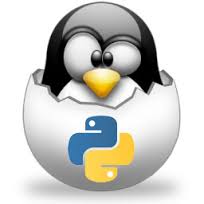 |
CS 3723 Programming Languages |
C++, C, Java | |
Stroustrup himself (from the horse's mouth):
- Bjarne Stroustrup's homepage. This is loaded with useful and interesting information about C++. Very sophisticated, but also practical and realistic.
- Stroustrup has his own C++ tutorial book, now in its third edition, which he recommends: The C++ Programming Lanuage, Special Edition by Bjarne Stroustrup, Addison-Wesley. Approx. 1000 pages. A notoriously difficult introduction to C++, this book is not for the faint-hearted or for novices
- Stroustrup has provided a remarkable book about the reasoning that went on in his development of C++: The Design and Evolution of C++, Addison-Wesley, 1994. 461 pages. This book gives a unique insider view into the history and the design decisions involved C++'s development.
C++ Design Goals:
- Support object-oriented programming.
- A compatible extension of C.
- As efficient as C (almost).
- A "better C".
-
1. Support object-oriented programming:
- Discourage all use of the preprocessor
(except for #include).
- Instead of constants defined by (for example) #define PI 3.141592653589793, use something like const double PI = 3.141592653589793;. (The second method gets syntax checked and type checked -- much less error prone.)
- Instead of macros defined by (for example) #define SQR(x) (x)*(x), use a function declared inline. (This is much less error prone, and with a good compiler, it will be as efficient.)
- Various outmoded features of C actually dropped -- mostly stuff you aren't familar with anyway. (Examples mentioned under 2 above.)
- Required prototypes.
- Strong typing more rigorously enforced.
- Type-safe I/O.
- A user-defined type should look just like a built-in type.
This was the main reason for creating a new language. The original name was "C with Classes". Stroustrup did not copy Smalltallk's O-O features for C++, but based them on the old Simula 67 language (from 1967). Smalltalk also was based on Simula 67, so that Stroustrup regards C++ as a sibling of Smalltalk and not an offspring.
The principle competitor of C++ was Objective C, another extension of C that grafted Smalltalk's features onto C, particularly the classes and message passing as communication between classes. More occurs at run-time in Objective C than in C++ -- in particular the message passing takes place at run-time. For this reason Objective C is more flexible (and perhaps easier to use) than C++, but not as efficient. Objective C was used in the very successful project to develope the upper parts of the NeXT operating system, and Objective C is still used in parts of Apple's OS X operating system, which was derived from NeXT.
C++ provides a rich set of O-O features, including most of what Java has, and even the controversial multiple inheritance.
2. A compatible extension of C:
This was a difficult goal, partly because there were many C dialects. In the end, C++ is compatible with reasonable and modern features of C, but drops some old-fashions C features, ones that today's students usually don't learn anyway. For example, old-style C function parameters are not legal in C++. They look like the following:
| Old style C parameters | New style C parameters |
|---|---|
int funct(x, y)
int x; double y;
{
/* ... */
} |
int funct(int x, double y)
{
/* ... */
} |
As another example, C allows a function call without an earlier prototype -- the function is assumed to return int by default. C++ requires a prototype or definition of any function before it is called.
The more-or-less compatibility was a big factor in C++'s popularity.
3. As efficient as C (almost):
It was very important to Stroustrup that C++ would execute a given C program as efficiently as C. This is major reason for the popularity of C++. Some few new features of C++ do involve a slight additional run-time overhead: polymorphism for example.
4. A "better C":
References (pointers) to objects in C, C++, and Java:
-
Passing an array to a function as a parameter in
C, C++, and Java:
These all handle arrays as parameters by passing
a pointer or reference to the array. It is not possible directly
to pass an array "by value", that is, by making a copy of the array.
If an array is passed to a function and its elements are changed
inside the function, the array in the calling function will also
be changed.
Returning an array from a function in C, C++, and Java: Again in all three cases a pointer or reference to the array is returned.
In Java passing a class to a function as a parameter, or returning a class from a function: Here the only option is to pass a reference (pointer) to the class and to return a reference (pointer).
Passing a struct (C or C++) or a class (C++) to a function as a parameter, or returning a struct or class: Here a "bare" struct or class can be passed, and a "bare" class can be returned. In all cases a copy is made during the pass or return. If one wishes to pass a pointer to the class or return a pointer to the class, this must be done explicitely. These issues are illustrated in a C program: structs in C
C, C++, and Java.
Comparison between C++ and Java: Here are side-by-side listings:
- Binary search trees in C++ and Java.
- Stack program C / C++ / Java: Side-by-side Comparison
- Stack program in one file C / C++ / Java: Side-by-side Comparison
Revision date: 2013-02-16. (Please use ISO 8601, the International Standard Date and Time Notation.)